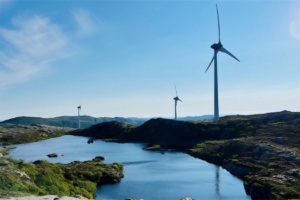Authors: Stefania Gardarsdottir, co-leader of SINTEF’s strategic work on Hydrogen, and Petter Nekså, Chief Scientist SINTEF Energy Research –

Several studies have shown that “blue” hydrogen will have very low CO2 intensity and is the perfect companion for “green” hydrogen in the pursuit for a fully decarbonised energy. So why do some studies claim that blue hydrogen will be 20% worse for the environment than directly burning natural gas?
The importance of assumptions when assessing Hydrogen
The answer is to be found in the assumptions used in the studies. Models produce results based on the input fed to them. That is why the boundary conditions are equally important as the model itself in analysing a certain process. So, it’s not surprising that the analysis presented in the Howarth and Jacobson (2021) study gives the reported results.
We find the boundary conditions and parameters used in the study not representative for European conditions and are puzzled by the technology and process choices in the paper. Thus, the results cannot be generalised to conclude on the topic of CO2 footprint from hydrogen produced from natural gas with carbon capture and storage (CCS). So where do the assumptions fail to be correct?
Not relevant in a European context
The main non-representative assumptions in the study in a European context are the methane leak rate assumed and the technology and process choices for hydrogen production and CCS.
- Representative stated methane emissions from gas production at the Norwegian Continental Shelf is 0.03%. The study uses a figure of 3.5%, so more than 100 times higher than the actual level. Even on a global scale, methane emissions are stated to be 0.23% in 2019, so the realism in the assumption is misleading also in a global context. In fact, by using this assumption, one would be better off burning coal.
- The article also assumes that hydrogen will be produced by steam methane reforming (SMR) with a carbon capture rate of only 76%. This is an outdated choice of technology for greenfield low-carbon hydrogen production. Blue hydrogen is mostly planned to be produced by auto-thermal reforming (ATR) where a capture rate of more than 95% may “easily” be achieved. For hydrogen production from natural gas with integrated capture of CO2, ATRs also see a higher energy efficiency compared to SMRs.
- The article assumes power production separately requiring a significant amount of natural gas consumption and corresponding CO2 emissions. In reality, the hydrogen production and CCS process can be made with a net zero power demand by proper system integration (Antonini et al., 2020. Hydrogen production from natural gas and biomethane with carbon capture and storage – A techno-environmental analysis. Sustainable Energy & Fuels, 4, pp. 2697-2986). Logically, if the concept has a power demand, it would be obvious to cover this with an emission free hydrogen fired gas turbine, or in Norway one could use grid power with a CO2 intensity of less than 20 kg/MWh.
Finally, the article questions the concept of CCS and in particular storing the captured CO2 properly and states that this is “optimistic and unproven”. Actually, during the last 25 years, more than 27 million tons of CO2 have been stored from the Sleipner gas sweetening plant and Melkøya LNG plants on the Norwegian Continental Shelf. Monitoring has proven that this is a permanent and secure storage method.
Others have also made similar criticisms of the assumptions used in the study.
Studies support a joint blue-green approach
SINTEF has performed analysis of both green and blue hydrogen production in projects financed by the EU commission, the Research Council of Norway and industry over several years. Results show that the CO2 intensity of blue and green hydrogen will be comparable and complementary when implementing appropriate and realistic technology concepts and boundary conditions. It would be equally wrong to analyse the footprint of green hydrogen assuming an electricity mix coming from unabated coal-fired power plants. Holistic, comparative studies are essential to identify the most feasible technologies for any specific value chain.
Hydrogen: The Future Is Green, But The Path There Is Multicoloured
In a European context, and probably in any context if the appropriate technological choices are made, it can be stated that blue hydrogen can be produced with comparable emissions to that of green hydrogen, contrary to the conclusion made by Howarth and Jacobsen (2021).
Two larger studies have recently shown that both belong in cost-optimal development of hydrogen markets. The IEA’s Net Zero by 2050 report sees almost a sixfold increase in global hydrogen production by 2050. In 2050, 60% of the demand is covered by water electrolysis; the remaining 40% is produced from natural gas with integrated carbon capture and storage with data based on chemical process modelling.
The Hydrogen4EU study found that the European hydrogen market could reach approximately 100 Mt per year. When relying on the current policies on uptake of renewables, 44% of the hydrogen market is covered by production from natural gas with low associated emissions.
What these studies have in common is that they cover the entire energy system such that emissions are included for all sectors, including up- and mid-stream methane emissions and the power sector that also have associated emissions that impact the effective carbon footprint of hydrogen produced from electricity.
There is no reason to revise the importance of using hydrogen produced from natural gas with CCS together with hydrogen produced from renewables in order to reach the aim of a net-zero society in 2050 to limit global warming to 1.5C. We need all the tools in our toolbox, and blue hydrogen is one of them.









Comments
Dear Dr Gardarsdottir,
I am certain that the value of 0.23% of methane intensity reported by OGCI is not correct. Instead of hiding the source of this number behind a hyperlink that probably most readers don’t click on, it would be more honest to state directly in the text that these are self-reported values by the Oil and Gas Industry.
Recent, somewhat more independent estimates put this value at 1.7% as a global average (IEA) and 2.3% for US gas. Please see the references below:
Global average: https://www.iea.org/reports/outlook-for-natural-gas , page 414
US methane emissions: https://www.science.org/doi/epdf/10.1126/science.aar7204
Best regards,
Martin Keller
Hi Alejandro,
My apologies, the references were missing before. The text has now been updated with hyperlinks to the correct reports.
-Stefania
Very interesting, thank you for these comments.
Would you please share the references of the data reported in the bullet points?
Regards,
Mauro
Hi Mauro,
My apologies, the references were missing before. The text has now been updated with hyperlinks to the correct reports.
-Stefania
Hi Stefania! I find really interesting the article by Howarth and Jacobson but there are very different opinions about it. I really appreciate your post, since this issue must be clarified. It’s really important to be sure if blue H2 is appropriate since we will need all sustainable solutions to achieve emissions reductions.
Could you share the reference where is stated methane emissions to be 0.23%? I think this assumption is key for the results and there is a large gap between 0.23% and 3.5%.
“it can be stated that blue hydrogen can be produced (using ATR) with comparable emissions to that of green hydrogen,” There are one or two problems with this statement.
No 1. At the moment, the CO2 footprint of most renewables (PV and wind) is based on production of these renewables using fossil sources (coal to make steel etc). This leads to footprints in the range 4gms/kWh (wind) through to 45gms/kWh (PV). However, as more renewable energy is used to produce renewables, these footprints will decline. This is an inevitability & has already happened with PV (mainly due to efficiency increase in the cells).
No 2. Where Nat gas is used as a feedstock for H2 production it is possible that emissions will decline – due to experience. That said, 95% from ATR seems quite high
No 3: where does the oxygen come from – ATRs need that.
No 4: How do the costs stack up compared to, for example H2 produced in Spain from large-scale PV? (given than H2 from ATR according to various studies is more expensive than SMR H2).